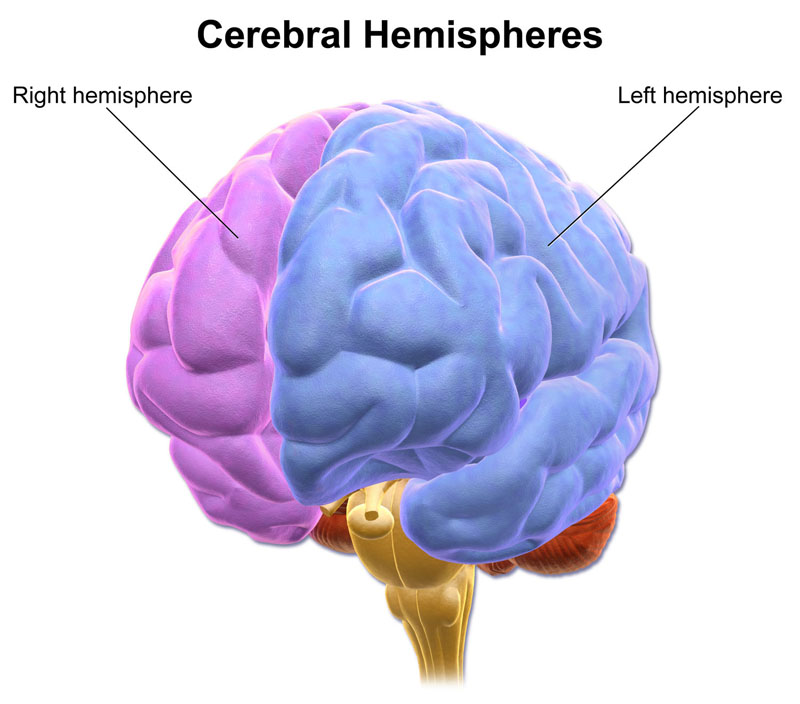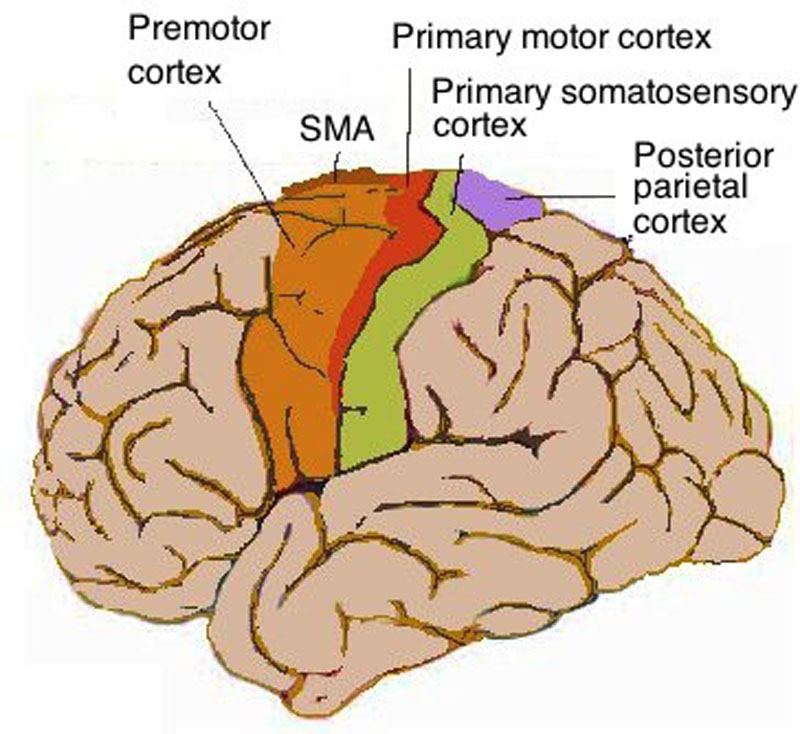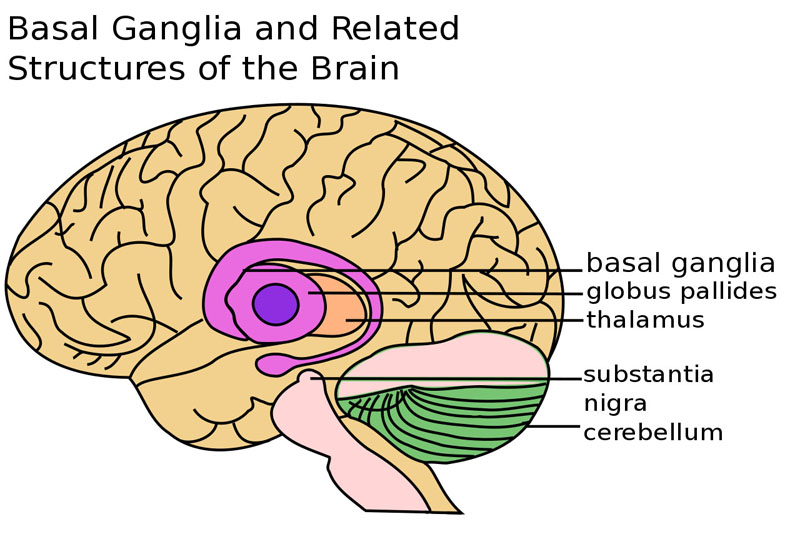The Forebrain
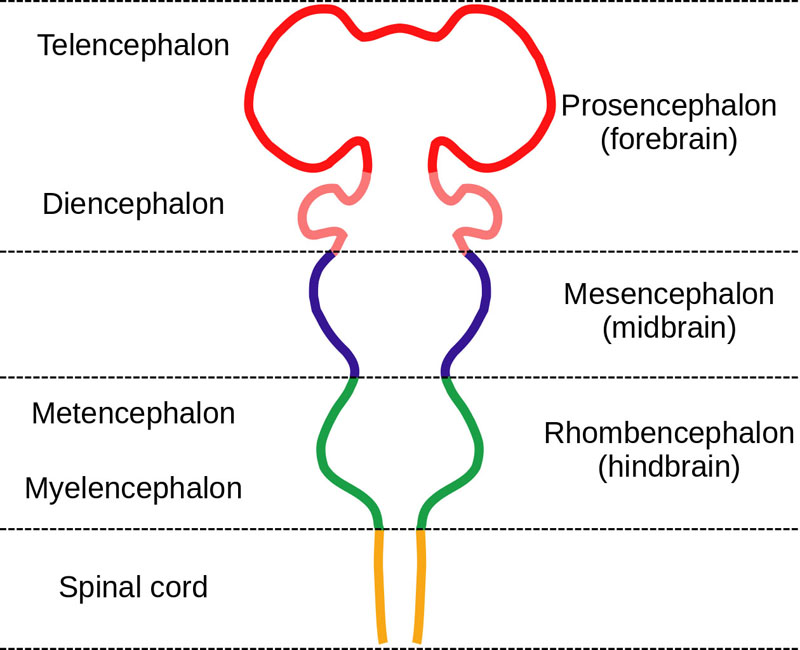
Diagram depicting the main subdivisions of the embryonic vertebrate brain. These regions will later differentiate into forebrain, midbrain and hindbrain structures.
- In the anatomy of the brain of vertebrates, the forebrain or prosencephalon is the rostral-most (forward-most) portion of the brain.
- The telencephalon is the embryonic structure from which the cerebrum develops prenatally. The dorsal portion, or pallium, develops into the cerebral cortex, and the ventral portion, or subpallium, becomes the basal ganglia.
- The diencephalon consists of several structures between the brainstem and the cerebrum, including the thalamus, hypothalamus, epithalamus, pituitary gland, and pineal gland.
- The cerebral cortex is the cerebrum's outer layer of neural tissue in humans and other mammals.
- The vertebrate cerebrum is formed by two cerebral hemispheres that are separated by a groove, the medial longitudinal fissure.
- The lateralization of brain function refers to how some functions, or cognitive processes tend be more dominant in one hemisphere than the other.
- The corpus callosum is a wide, flat bundle of neural fibers about 10 cm long beneath the cerebral cortex at the longitudinal fissure. It connects the left and right cerebral hemispheres and facilitates interhemispheric communication.
- Organized as distributed networks throughout the frontal, parietal, temporal and occipital lobes, association areas function to produce a meaningful perceptual experience of the world, enable us to interact effectively, and support abstract thinking and language.
- Projection areas are areas in the four lobes (frontal, parietal, temporal, occipital) of the brain where sensory processing occurs.
- One of the four major lobes of the cerebral cortex, the frontal lobe is located at the front of each cerebral hemisphere and positioned in front of the parietal lobe and above and in front of the temporal lobe.
- The precentral gyrus (a.k.a. motor strip) is a prominent structure on the surface of the posterior frontal lobe. It is the site of the primary motor cortex
- Located in the front part of the frontal lobe of the cerebral cortex, the prefrontal cortex has been implicated in planning complex cognitive behavior, personality expression, decision making, and moderating social behavior.
- A fold in the cerebral cortex, the central sulcus separates the parietal lobe from the frontal lobe and the primary motor cortex from the primary somatosensory cortex.
- Located immediately anterior to the central sulcus, the motor cortex is the region of the cerebral cortex involved in the planning, control, and execution of voluntary movements.
- Broca's area is a region in the frontal lobe of the dominant hemisphere with functions linked to speech production.
- Aphasia is the name given to a collection of language disorders caused by damage to the brain. A requirement for this diagnosis is that, prior to the illness or injury, the person‹s language skills were normal.
- One of the four major lobes of the cerebral cortex, the parietal lobe is positioned above the occipital lobe and behind the frontal lobe and central sulcus.
- The lateral postcentral gyrus is a prominent structure in the parietal lobe of the human brain. It is the location of the primary somatosensory cortex.
- Located in the parietal lobe, the somatosensory cortex is the main sensory receptive area for the sense of touch.
- A cortical homunculus is a physical representation of the human body, located within the brain, a neurological map of the anatomical divisions of the body. There are two types: sensory and motor.
- Usually the result of damage to the right parietal lobe, contralateral neglect is neglect of part of the body or space, which can impair many self-care skills such as dressing and washing.
- One of the four major lobes of the cerebral cortex, the temporal lobe is located beneath the lateral fissure on both cerebral hemispheres. It is involved in processing sensory input into derived meanings for visual memory, language comprehension, and emotional association.
- The lateral sulcus divides both the frontal lobe and parietal lobe above from the temporal lobe below. It is in both hemispheres of the brain but is longer in the left hemisphere in most people.
- The primary auditory cortex is the part of the temporal lobe that processes auditory information, performing basic and higher functions in hearing.
- Wernicke's area is one of the two parts of the cerebral cortex linked to speech (the other is Broca's area). It is involved in the production of written and spoken language.
- The occipital lobe is one of the four major lobes of the cerebral cortex. It is the visual processing center of the brain containing most of the anatomical region of the visual cortex.
- The part of the cerebral cortex responsible for processing visual information, the visual cortex is located in the occipital lobe.
- The striate cortex is the primary visual cortex, receiving visual input from the thalamus. It is also known as Visual area one
- Sensory cortex refers to the primary and secondary cortices of the different senses: the visual cortex on the occipital lobes, the auditory and olfactory cortices on the temporal lobes, and the primary somatosensory cortex on the anterior parietal lobes.
- At the base of the forebrain, comprising multiple subcortical nuclei interconnected with the cerebral cortex, thalamus, and brainstem, the basal ganglia are associated with control of voluntary motor movements, procedural learning, routine behaviors, cognition, and emotion.
- The basal forebrain is a collection of structures located in the subcortical part of the forebrain which are important in the production of acetylcholine, which is then distributed widely throughout the brain.
- The thalamus is a midline symmetrical structure situated between the cerebral cortex and the midbrain. Some of its functions are the relaying of sensory and motor signals to the cerebral cortex and the regulation of consciousness, sleep, and alertness.
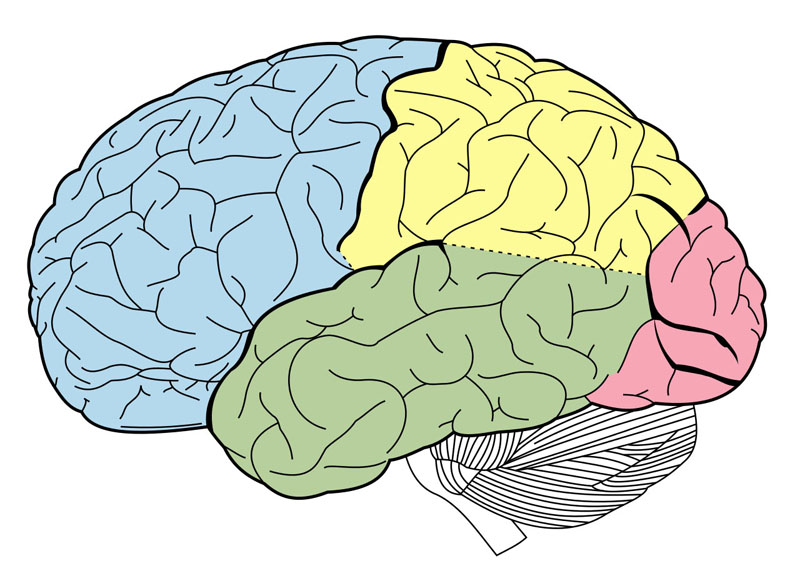
The lobes of the cerebral cortex include the frontal, temporal, occipital, and parietal lobes. The cerebellum (unlabeled) is not part of the telencephalon.
